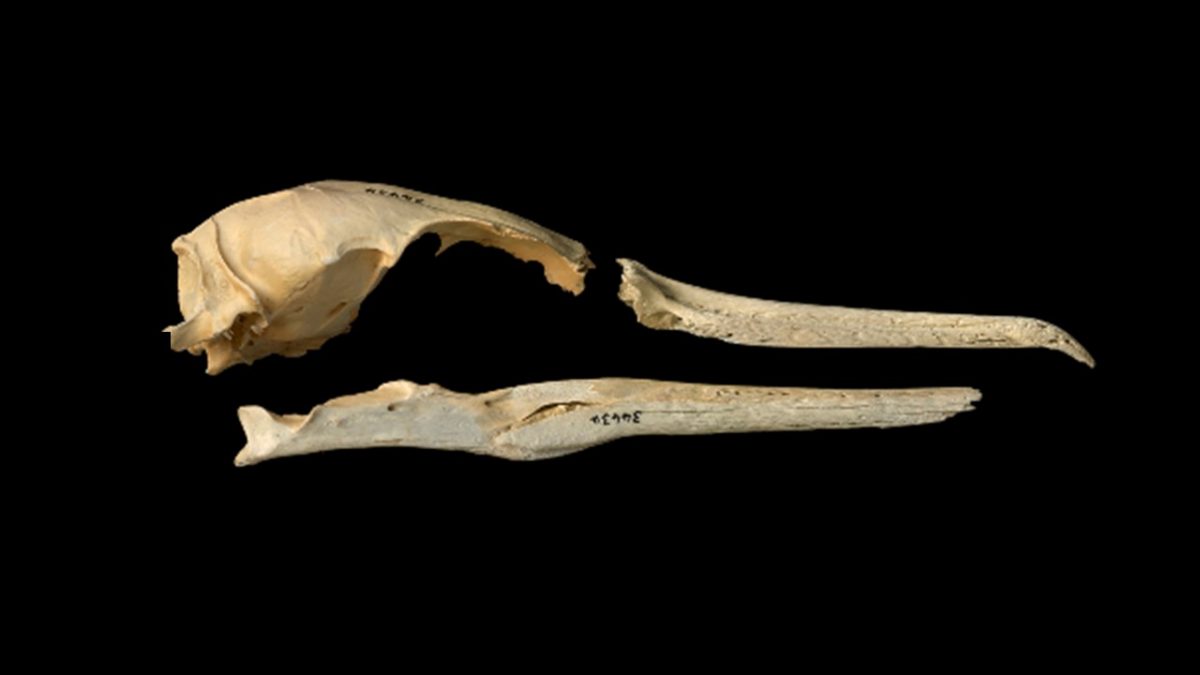The scientists shield their eyes from the howling wind and flying sand as they carefully uncover the precious skeleton. If it wasn’t for the absence of giant sandworms, this could have been a scene straight out of Dune.
Alex Verry and Matt Schmidt are on Rakiura Stewart Island at West Ruggedy Beach excavating a significant taonga, a moa skeleton. Surrounding them are high, steep-sided golden sand dunes draped over granite tors that stick up out of the dunes like the emergent peaks of buried mountains. Just over the water, tantalizingly close, is the kākāpō stronghold of Whenua Hou Codfish Island.

The partial moa is resting in a natural granite bowl, which no doubt protected it for hundreds of years from being completely eroded away. Amazingly, underneath the skeleton were gizzard stones, used by the moa to grind up plant matter, and a dark brown organic-rich sand, stained by the rotting flesh and the moa’s last meal. Crucially, there were no cut marks on the bones to suggest butchery, nor any associated cultural material. This all screamed only one thing, something nearly as rare as moa’s teeth on Rakiura, a natural moa that died where it lay! Continue reading “The mystery of the moa: did these feathered giants call Rakiura Stewart Island home?”


